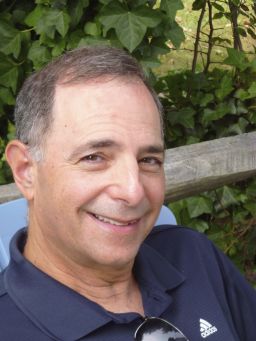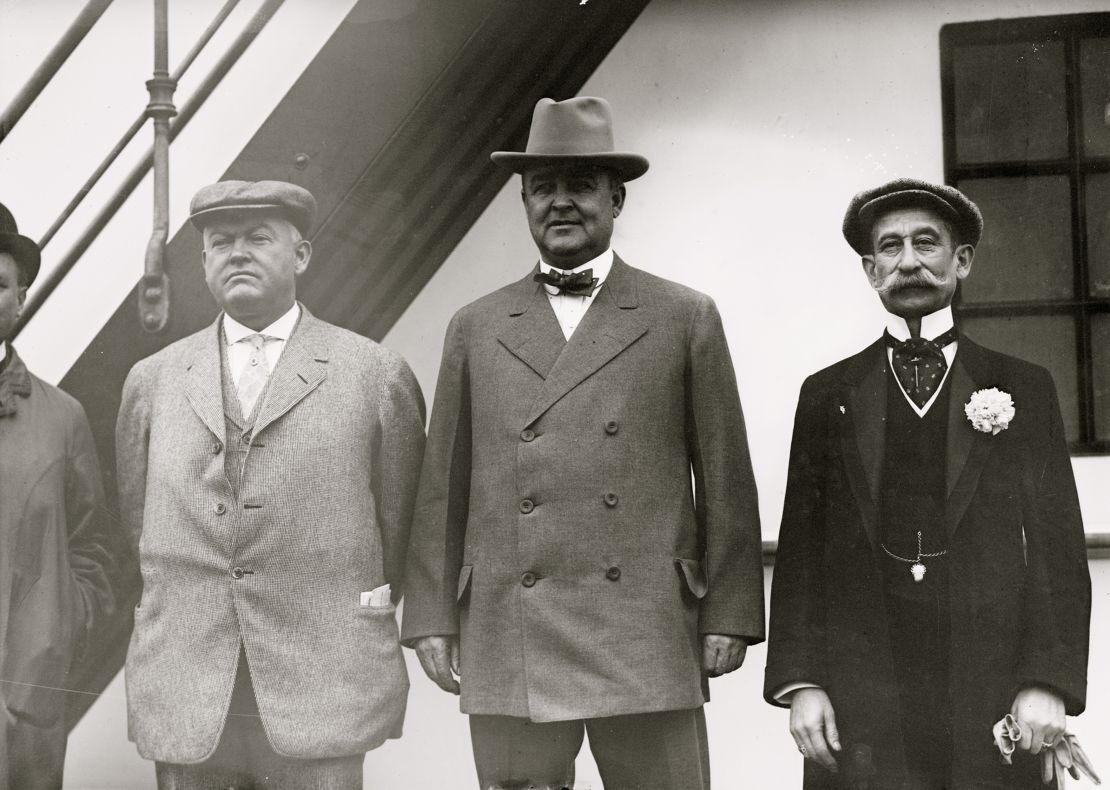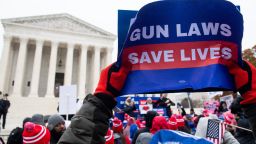Editor’s Note: Paul Moses is author of “An Unlikely Union: The Love-Hate Story of New York’s Irish and Italians” and a forthcoming book on the NYPD’s Italian Squad, a unit of Italian immigrant detectives that operated on and off from 1904 to 1922. He is a professor emeritus of journalism at Brooklyn College. The views expressed here are his own. View more opinion articles on CNN.
“Big Tim” Sullivan was in great form on the day he cajoled fellow state senators into approving a landmark New York gun law, the one that the US Supreme Court has now overturned some 111 years later.
His speech “was crude and illiterate, but it was human, forceful and replete with sympathetic illustrations taken from the actual life of the East Side,” the Brooklyn Eagle newspaper said of Sullivan, a powerful Tammany Hall district leader who was renowned for the thousands of meals, pairs of shoes and jobs he gave out to his immigrant constituents, but also notorious for his thinly veiled underworld connections. The Legislature passed what quickly became known as the Sullivan Law with only a handful of nays.

Now, the Supreme Court’s June 23 ruling has found that the law violated the Second Amendment by giving authorities broad discretion to decide who would get a permit to carry a concealed weapon. The lead petitioner in the case, the New York State Rifle and Pistol Association, argued that the licensing process was actually designed to discriminate: “the law was passed with an avowed intent, supported by everybody from City Hall to the New York Times, to disarm newly arrived immigrants, particularly those with Italian surnames.” Its brief says that, according to the Times, 70% of those arrested under the Sullivan Law during its first three years “had Italian surnames.”
Justice Clarence Thomas picked up on this anti-minority theme in the court’s majority opinion, writing of how Black people were deprived of the right to arm themselves in the post-Civil War South. In an amicus brief, public-defender groups representing indigent defendants drew a direct link from historical discrimination to today’s mainly Black and Hispanic defendants. “New York enacted its firearm licensing requirements to criminalize gun ownership by racial and ethnic minorities,” they argued. “That remains the effect of its enforcement by police and prosecutors today. The consequences for our clients are brutal.”
The origin of the Sullivan Law is more complicated than that, although it is true that New York’s lively press emphasized its use against Italians, who were stereotyped under the racist eugenics of the day as inherently prone to violence.
The Times didn’t actually carry a story saying that over 70% of those charged under the Sullivan Law had Italian names (at least none that I have discovered in my research on the topic), although the number is often used in the gun debate. It is based on a 1990 study published by the Second Amendment Foundation, which opposes gun control laws. The study surveys all the gun arrests reported in the Times following the law’s passage; the finding may only prove that the newspaper took a particular interest in publicizing the crimes of people whose names ended in a vowel. The Times seemed to have an anti-immigrant streak in those days.
More reliable data can be found in a New York State report on convictions during the year that ended October 31, 1912: 35% of the 381 people convicted of carrying a concealed weapon in New York City were born in Italy. This was still more than double the percent of Italian-born residents in the city, but the Italian population skewed toward young men, the group most likely to be arrested for a gun offense.

The drive to toughen New York’s gun laws intensified with two shootings that had nothing to do with immigrants. James Gallagher, fuming over the loss of his $2-a-day city job, shot New York City Mayor William J. Gaynor in the summer of 1910 as he stood on the deck of a ship about to depart for a cruise to Europe. Once considered presidential material, Gaynor returned to City Hall two months later, a shattered man suffering from the bullet still lodged in his throat.
Then, in January, the slaying of popular novelist David Graham Phillips on the north side of Manhattan’s Gramercy Park – and the accompanying suicide of the assailant, a mentally ill violinist from a socially prominent family – shocked the public. Soon after, the New York City coroner called for harsher gun laws because of the increase from 68 gun-related homicides in 1909 to 108 in 1910.
Sullivan had already started campaigning for an anti-gun law. The Tammany man allied on the issue with his arch-enemies, the reformers who normally thought of him as a symbol of graft, gambling, prostitution and election fraud.
Say what one will about Sullivan’s motives, but he was not anti-immigrant. A dapper six-foot 200-pounder with steely blue eyes, “the Big Feller” courted the Jewish and Italian immigrant voters who dominated in his Lower East Side district.
Sullivan pushed the gun bill during his 1910 election campaign, telling constituents crowded into a local theater, “The gun toter and the tough man – I don’t want his vote, for I’m going to put him in jail as soon as I get back to Albany.” He knew his people and their needs; it’s clear that his stance was acceptable to them.
But it is true that many of his allies on the gun law – good-government groups, business leaders and reform-friendly newspapers – understood the measure as a tool to go after Italian immigrants.
“It was the intent of this beneficent law that hot-headed and impulsive people of the temperament of your race should be restrained from carrying weapons,” Judge Warren Foster told the first defendant convicted under the law, laborer Marino Rossi. The quote brought the judge an accolade in the Times: “The judge’s warning to the Italian community was timely and exemplary.”
From the start, there were questionable “sweeps” on gangland turf – aimed at Irish, Jewish and Italian hoodlums – and unnecessary arrests of people like workingman Rossi, foreshadowing contemporary controversies over police stop-and-frisk tactics. But the new law also helped police nab dangerous gangsters on felony charges without the long-shot task of persuading witnesses to testify against them.
We see that in an arrest made by Detective Charles Carrao, first recipient of the NYPD’s highest award, the Medal of Honor, four days after the law went into effect. He caught the elusive leader of a band of extortionists with a bomb under his coat (considered a concealed weapon at the time). It was the rare occasion when a gang leader was sent up the river to Sing Sing.
The Sullivan Law survived numerous legal challenges, but the die was cast when the Supreme Court unscrambled the ambiguous syntax of the Second Amendment in the favor of gun advocates. In a 2008 ruling, it concluded that the right to possess a firearm was guaranteed to individual Americans and “unconnected with service in a militia.”
Sullivan, ever the mystery, died in 1913 in shadowy circumstances, his body identified in the morgue after he’d been missing for almost two weeks. Big Tim made a few judges in his time, and would no doubt have seen the Supreme Court’s decision as strictly a matter of politics. Then he would have gone to work figuring out a way around it.




